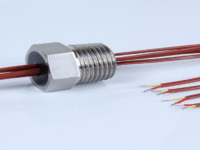The Importance of Palladium Metal Recycling in Sustainable Practices

Precious metal palladium is used in many different industrial applications, most notably in jewellery, electronics, and car catalytic converters. Palladium recycling is crucial to resource conservation, environmental impact reduction, and the advancement of sustainable practices, and its demand is only growing. This essay will examine the value of recycling palladium metal in sustainable practices and how it can contribute to the creation of a greener future.
1. The Role of Palladium in Sustainable Practices
Because of its many uses and special qualities, palladium is essential to sustainable practices. As a catalyst in automobile catalytic converters, palladium helps decrease hazardous emissions from cars, helping to improve air quality and environmental protection. In addition, palladium’s conductivity, robustness, and biocompatibility are valued in electronics, jewellery, and medical equipment.
2. Preservation of Natural Assets
Recycling palladium is crucial to preserving natural resources and lowering the demand for new extraction and mining. Rare metal palladium is mostly extracted from the earth as a byproduct of nickel and platinum mining. Palladium reserves may be prolonged and the environmental effects of mining operations reduced by recycling palladium from end-of-life items including jewellery, electronics, and catalytic converters.
3. Minimising Environmental Impact
Palladium recycling contributes to a decrease in the environmental impact of palladium use and production. Due to the high energy, water, and resource requirements of palladium mining and refining, habitat destruction, water pollution, and greenhouse gas emissions result. By recycling palladium, we may minimise energy consumption, decrease greenhouse gas emissions, and avoid pollution, so lessening the negative consequences on the environment.
4. Promoting the Circular Economy
Reintroducing precious metals into the manufacturing cycle is one way that palladium recycling advances the circular economy. Palladium-containing materials are not wasted; instead, they are gathered, processed, and refined to make new goods. As a result, there is less of a need for virgin materials, resources are conserved, and waste is reduced, which makes resource usage along the supply chain more sustainable and effective.
5. Economic Benefits
Palladium recycling generates income, creates jobs, and saves manufacturers money, among other important economic benefits. Palladium waste is acquired by recycling centres and scrap metal dealers from a variety of suppliers, who then turn it into raw materials for products. This boosts employment in the manufacturing, transportation, and recycling sectors and promotes economic development in the areas where recycling facilities are situated.
6. Conservation of the Environment
Palladium recycling is a way for people, companies, and governments to show that they care about the environment and support sustainable development. Recycling palladium eliminates the need for new mining operations, maintains natural habitats, and protects ecosystems from the negative consequences of resource exploitation. Global issues including resource shortages, air pollution, and climate change are also addressed by it.
Conclusion
Palladium metal recycling is a vital practice that promotes sustainable practices, conserves natural resources, and reduces environmental impact. Our efforts to recycle palladium may help to protect ecosystems, cut greenhouse gas emissions, and advance a circular economy. Building a more sustainable and ecologically friendly future will depend on investments in technology and infrastructure for palladium recycling, as the demand for this metal grows.





